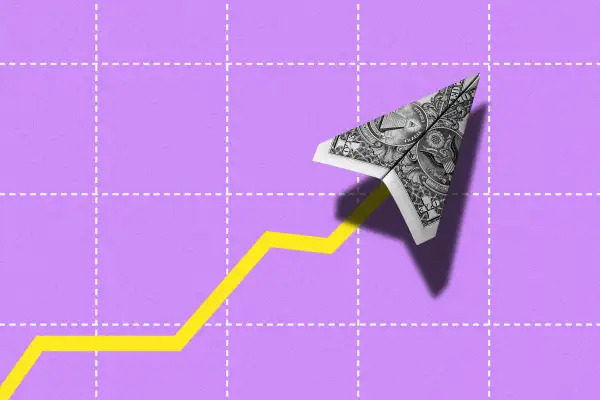Why April Could See the Stock Market Move Even Higher
Money is not a client of any investment adviser featured on this page. The information provided on this page is for educational purposes only and is not intended as investment advice. Money does not offer advisory services.

The stock market has steadily climbed this year, and as April approaches, investors have reason to expect more of the same given that month's track record for strong stock performances.
After gaining 24% last year, the S&P 500 — the benchmark index used to measure how stocks are performing overall — has continued its bullish run in 2024 by posting a nearly 11% gain through the first quarter of 2024.
This is welcome news for investors who have recently seen that index as well as the Dow Jones Industrial Average and the Nasdaq set record highs in the first quarter of the year.
However, overshadowing this is the uncertainty surrounding the Federal Reserve’s decision on when to begin slashing interest rates. According to data from the American Association of Individual Investors, sentiment pulled back from 51.7% bullishness in the first week of March to 43.2% bullishness through last week, demonstrating a more reserved outlook among investors.
But with April arriving, there’s new cause for optimism. Historically, April tends to be a great month for the stock market. And while past performance is never indicative of how stocks will behave going forward, looking at seasonality can provide insight into how stocks typically perform at certain times of the year.
Is April a good month for the stock market?
According to Reuters, since 1945, April and December are tied as the best-performing months of the year for stocks, with an average return of 1.6%. (September is notoriously the worst, with an average loss of -0.6%.)
During recessions, April’s positive performances can be even more pronounced. In 2008 and 2009 amid the Great Recession, April produced returns of 4.8% and 9.4%, respectively. And in the wake of COVID-19’s arrival, April 2020 saw an enormous 12.7% gain — the 12th best monthly performance for the S&P 500 dating back to 1928.
One theory behind April's positive performance is that investors receive tax refunds that month and inject that money into the market pushing prices higher. No matter what the cause, April is historically such a strong month for stocks that it has only posted losses twice in the past 18 years (in 2012 and again in 2022 during an extended bear market) and was the best performing month in the year seven times dating back to 2001.
What April stock market trends mean for investors
Financial advisors contend that investors shouldn't base their strategies on seasonality and historical trends since they don't necessarily indicate what is likely to happen in the future. That’s why the old adage — time in the market beats timing the market — remains relevant today.
For example, pulling out of the market to avoid investing in September, historically the worst performing month of the year, may seem logical at first. Yet investors that did so in 2010 missed out on that month's 8.8% gain, which was the largest single-month increase that year for the S&P 500.
For buy-and-hold investors, if the Fed's uncertainty is causing distress, keep in mind that over time stock prices tend to tick upwards, which has been the case with the S&P 500 in 68% of the years it has existed. Notably, a significant amount of those gains have come in the month of April.
More from Money:
Why Hedge Funds Are Embracing Warren Buffett’s Classic Advice About Index Funds


